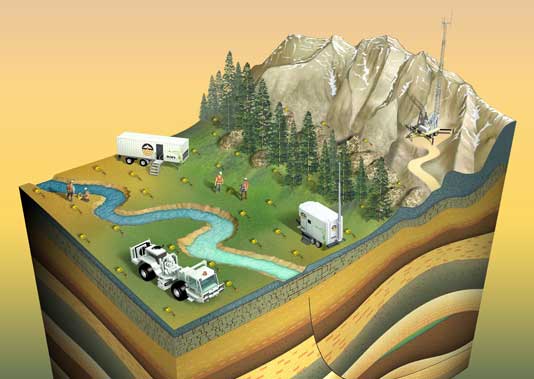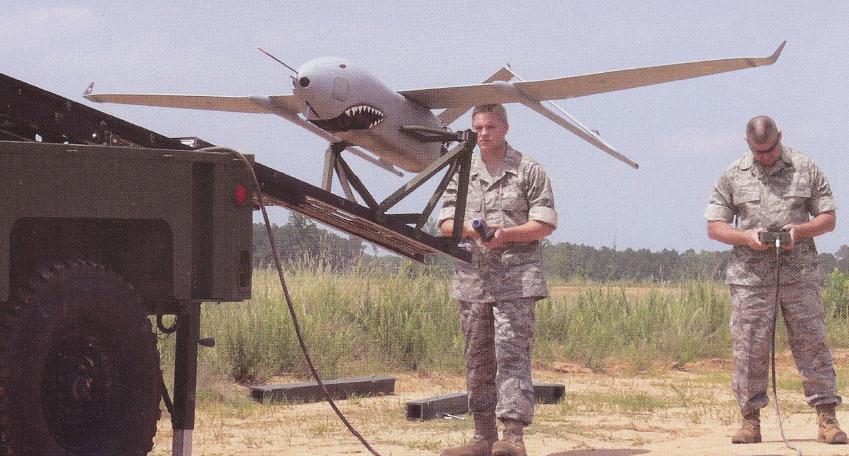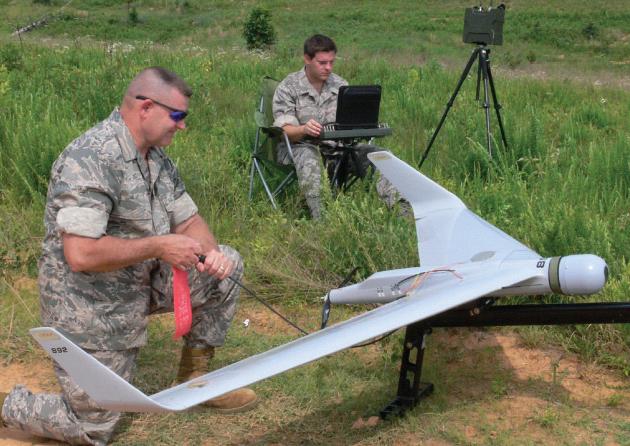Archive for the ‘Video’ Category
Sunday, January 27th, 2013
During the inauguration there were press reports of Jumbotron problems — pixelated video and distorted audio — at the Washington Monument.
Yesterday the Washington Post reported that the problems could have been due to “interference with a microwave signal” that brings video and audio to the Jumbotrons.
(more…)
Posted in 2200-2290, Audio, Interference, Video | 1 Comment »
Tuesday, August 14th, 2012
Ericsson discusses the recent meeting of the Moving Picture Experts Group (MPEG), which issued a draft international standard of the new High Efficiency Video Coding (HEVC) video-compression format. It’s twice as efficient as current standards. Twice as efficient means half the bits, which means half the spectrum capacity is required for the same video quality.
(more…)
Posted in MPEG, Source Coding, Video | No Comments »
Tuesday, July 19th, 2011
The following is my response to a query on LTE versus wired, and the user experience. It capsulizes my current thinking, which evolves.
To your point, I don’t see LTE being competitive with wired in terms of speed or reliability today or in the future. You take the hit there for the convenience of mobile or portable operation. There’s a notion that if we just add enough base stations and repurpose enough spectrum to LTE, we can replicate the home wired experience in the mobile environment, but I don’t think that’s practical. The throughput from an LTE sector is divided among all users in the sector. If everyone wants to watch the Super Bowl at once on LTE, forget it (unless the LTE broadcasting standard is implemented, which let’s everyone watch the same channel like today’s TV (cough)). On FIOS or cable, the Super Bowl is no problem.
(more…)
Posted in 3GPP, 4G, Broadband, IMT-Advanced, LTE, LTE-Advanced, Mobile Broadband, TV Broadcasting, Video | 3 Comments »
Friday, April 22nd, 2011
One of AT&T’s non-redacted arguments in support of its acquisition of T-Mobile USA is that data usage on AT&T’s network is projected to “skyrocket by a factor of eight to ten” over the next five years due in part to streaming HD video. AT&T’s vision is that T-Mobile’s resources would be used to relieve resulting capacity restraints.
Enabling an HD streaming service will be challenging because of the relatively-high and somewhat-constant bit rates required in a fading radio environment. Wondering how practical this is, I recalled a paper Motorola prepared last year reporting some of its simulation results on mobile broadband streaming video.
(more…)
Posted in AT&T, LTE, T-Mobile, Video | 1 Comment »
Wednesday, April 13th, 2011
This summarizes a selection of applications for the Experimental Radio Service received by the FCC during March 2011. These are related to VHF propagation, satellite communications, TV white space, military communications, radar, software defined radio, aircraft broadband services, adaptive networks, peer-to-peer networks, intermodulation testing, unmanned aircraft systems, maritime broadband communications, border surveillance, target acquisition, and millimeter wave propagation. The applications are sorted by frequency.
(more…)
Posted in Ad-hoc Networks, Amateur Radio, Antennas, Aviation, Broadband, Cognitive Radio, Electronic Warfare, Experimental, Femtocells, FM Broadcasting, GSM, Interference, Intermodulation, Maritime, Military, Millimeter-wave, Peer-to-Peer, Picocells, Propagation, Public Safety, Radar, Satellite, Sensors, Software Defined Radio, Space Communications, Spectrum, Telemetry, Terminals, UAS, Video, White Space, Wi-Fi, WiMAX | No Comments »
Monday, November 22nd, 2010
The FCC’s National Broadband Plan (NBP) recommends that the Commission make available 500 MHz of new spectrum for wireless broadband, including 300 MHz for mobile use. In support of that recommendation, on October 21, the FCC released an FCC Omnibus Broadband Initiative technical paper: Mobile Broadband: The Benefits of Additional Spectrum. The paper concludes that mobile data demand is likely to exceed capacity in the near term and, in particular, that the spectrum deficit is likely to approach 300 MHz by 2014.
(more…)
Posted in 4G, Broadband, DTV, FCC, Femtocells, IMT-Advanced, National Broadband Plan, Spectrum, TV Broadcasting, Video, Wi-Fi, Wireless | No Comments »
Wednesday, September 8th, 2010
This summarizes a selection of applications for the Experimental Radio Service received by the FCC during August 2010. These are related to radar, military communications, mesh networking, unmanned aerial vehicles, satellite services, biomedical telemetry, aircraft telemetry, safe-driving systems, geophysical sensors, electronic warfare, smart grid, and antenna testing.
- INOVA Geophysical Equipment Limited filed an application (with supporting exhibits) to test a proprietary mobile radio system in the 30-36 MHz and 150-174 MHz bands. The radio links would be used to control remote geophysical seismic recording equipment, which INOVA manufactures. At the end of testing, INOVA plans to put the radio equipment into production and lease it to customers.

- Fortress Technologies filed an application for experimental license to test several of its secure mesh-networking products developed for military applications. Several exhibits are included but they are not publicly available due to a confidentiality request. Operation is to be on 4.9425-4.9875 GHz.

(more…)
Posted in Ad-hoc Networks, Antennas, Aviation, DTV, Electronic Warfare, Experimental, Land Mobile, Location, Military, Millimeter-wave, Private Radio, Public Safety, Radar, Satellite, Smart Grid, Telemetry, Uncategorized, Unlicensed, Video, Wireless | No Comments »
Sunday, July 4th, 2010
This summarizes a selection of applications for the Experimental Radio Service received by the FCC during June 2010. These are related to aircraft systems, WiMAX, sports telecast support, public safety communications, tactical cellular service, medical telemetry, satellite, antennas, radar, white-space devices, weapons telemetry, spacecraft communications, and broadcasting.
- AAI/Textron Systems Corporation filed an application (with supporting exhibits) for experimental license. The company wants to test its Shadow 200, Aerosonde, Orbiter and other unmanned aircraft systems. This is related to work for the United States Marine Corp. Operation is to be on 310-390 MHz, 902-928 MHz, 1090 MHz, 1350-1390 MHz, 1700-1859 MHz, and 4400-4999 MHz. Transmitting equipment is manufactured by Microhard Systems Corporation, Free Wave Technologies, Advanced Microwave Products, Global Microwave Systems, and Microair Avionics.
FCC staff has asked for several items of information before approving the application. The FAA operates in the frequency bands 328.6-335.4 MHz, 1090 MHz, and 1215-1390 MHz; FCC staff asks for coordination of these bands with the FAA Regional Office. In addition, the frequency bands 225-328.6 MHz and 335.4-399.9 MHz are used for military purposes, and the applicant was asked to coordinate with NTIA’s Interdepartment Radio Advisory Committee (IRAC).

- AAI/Textron Systems Corporation also filed an application (with supporting exhibits) for special temporary authority to operate on 420-450 MHz and 2000-2400 MHz for a government project apparently involving the Orbiter miniature unmanned aircraft system. There is not much information about the proposed operation, and FCC staff has asked for more details.
In correspondence to the applicant, FCC staff notes that the “Aerospace & Flight Test Radio Coordinating Council (AFTRCC) oversees the frequency bands; 1435-1525 MHz, 2310-2320 MHz, and 2345-2390 MHz. These frequency bands need to be removed or need to be prior coordinated.”

- Sportvision filed an application (with supporting exhibits) for special temporary authority for testing of an automobile race track wireless data system that is to provide data communications between vehicles in a race track and one or more fixed base stations installed along a track. Operation is to be on 2395-2400 MHz.
One application seen for this system is video image enhancement for television broadcasting of automobile racing events. The would allow television viewers to see, displayed on screen, the real-time location of cars during a racing event.
The vehicles would be equipped with GPS receivers and other sensors that generate a data packet every 200 milliseconds. The wireless system would collect those packets and deliver them to a control station in real time. “The radio itself is a direct sequence spread spectrum unit, using production radios for 2.4 GHz. The system may ultimately be deployed on an unlicensed basis in the 2.4 GHz band or elsewhere, but the high noise levels in that band in the test locations (commercial automobile race tracks) are unsuitable for development and testing of the product.”
“An Intersil baseband processor performs the Direct Sequence modulation and demodulation. It is part of a five-chipset developed for the 802.11b standard. It uses 1/4th of the standard 802.11 speed resulting in a narrow occupied RF bandwidth.”
The frequency band requested is allocated on a primary basis to the Amateur Radio Service, and coordination is to be performed with the ARRL. This application was granted on June 4.
(more…)
Posted in 3GPP, Antennas, Aviation, Cognitive Radio, Experimental, GPS, High Frequency, Infrastructure, Internet, M2M, Military, Public Safety, Radar, Satellite, Space Communications, Spectrum, Telemetry, Terminals, Unlicensed, Video, White Space, WiMAX | No Comments »
Monday, March 22nd, 2010
This summarizes a selection of applications for the Experimental Radio Service received by the FCC during February 27 – March 14. These are related to smart grid, antennas, radar, military, satellite, data links, roaming services, maritime communications, WiMAX, network protocols, and UAVs.
- Sensus Spectrum filed an application (with supporting exhibit) for special temporary authority to test European Advanced Metering Infrastructure (AMI) equipment on 412-424 MHz.
- The University of Colorado filed an application (with supporting exhibit) for special temporary authority to test the feasibility of synthetic aperture radar in an end-fire configuration. This configuration will output short (50ns) bursts of approximately 10W at 500-530 MHz in order to construct an image of objects in an adjacent parking lot. This is an attempt to prove the feasibility of a new radar configuration for a proposal to NASA.
- Oceanit filed an application for special temporary authority for a Ku-band SATCOM transmission test with an experimental ground-based phased-array antenna. Operation is to be on 13.75-14.50 GHz.
- Northrop Grumman filed an application (with supporting exhibit) for special temporary authority to test an electronically-scanned-array radar system intended to act as part of a missile interceptor system to protect against rocket, artillery and mortar threats. Operation is to be on 16.2-17.3 GHz.
(more…)
Posted in Antennas, Aviation, Experimental, Military, Network Protocols, Radar, Satellite, Smart Grid, Telemetry, Video, WiMAX | No Comments »
Monday, March 1st, 2010
This summarizes a selection of applications for the Experimental Radio Service received by the FCC during February 21-26: radar, WiMAX, MVDDS, aeronautical communications, private mobile data, millimeter wave, high-frequency data, space communications, and radiolocation.
- The Maryland Department of the Environment filed an application (with supporting exhibits) to operate a wind-profiling radar on 915 MHz. The equipment was developed by the National Oceanic and Atmospheric Administration (NOAA) and fabricated by Radian International. The antenna is to consist of one steerable four-panel micro-patch phased array.
- DTV Norwich filed an application (with supporting exhibit) for special temporary authority to conduct propagation tests prior to potential full-scale deployment of Multichannel Video and Data Distribution Service (“MVDDS”) at 12.2 to 12.7 GHz in the Miami area. This is to determine the suitability of potential transmitter sites for full-scale operation, for which DTV Norwich has a license.
(more…)
Posted in Aviation, Experimental, High Frequency, Millimeter-wave, MVDDS, Private Radio, Radar, Radiolocation, Space Communications, Telemetry, Video, WiMAX | No Comments »
Wednesday, February 3rd, 2010
The equipment for electronic news gathering started as transportable, transitioned to portable, and is going personal. Frank Beacham looks at the irony of video technology breakthroughs coming at a time of struggle in traditional television news. He questions the role of skilled reporting and analysis in the forthcoming glut of on-location video.
Posted in Video | No Comments »



